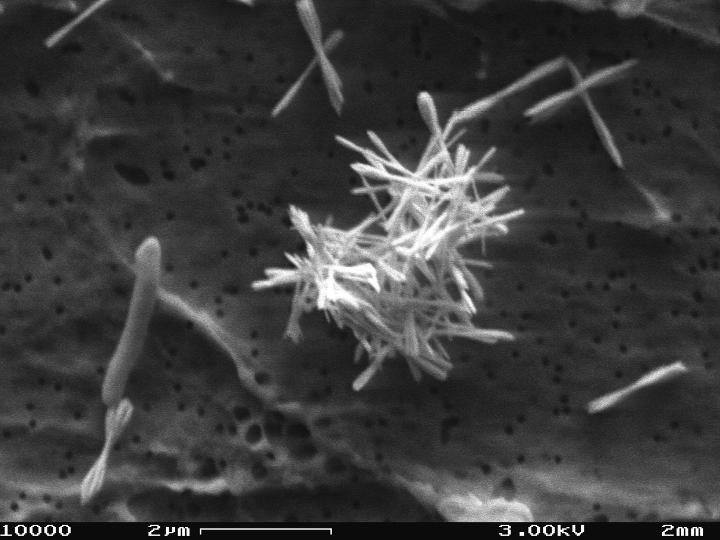
Biomaterial from Bacteria Shows Promise for Photonic Applications
An international research team showed that a material created using tellurium nanorods, which are produced by naturally occurring bacteria, could be an effective nonlinear optical material that is capable of protecting electronic devices against high-intensity bursts of light, including those emitted by lasers. The researchers harvested biologically generated elemental tellurium nanocrystals produced by the anaerobe, Bacillus selenitireducens, and studied their potential for nonlinear optical applications including optical limiting, mode-locking, Q-switching, and all-optical switching.
Nonlinear optical measurements of the material showed strong saturable absorption and nonlinear optical extinctions induced by Mie scattering over broad temporal and wavelength ranges. Through comparative studies in thermal-optic switching, the researchers demonstrated that the biomaterial tellurium (Bio-Te) provided definite improvements in the thermal-optic decaying lifetime compared to the materials WS2 and graphene.

Bacillus beveridgei strain MLTeJB, composed of aggregated Te(0) shards. Courtesy of U.S. Geological Survey.
The researchers used a nanocomposite made up of biologically generated elemental tellurium nanocrystals and a polymer to build an electro-optic switch that was immune to damage from a laser. This optical switch exhibited excellent performance, the team said, with 276.3 μs and 563.0 μs rise and fall times, respectively.
Professor Werner J. Blau of Trinity College Dublin said that the biologically generated tellurium nanorods could be especially suitable for photonic device applications in the mid-infrared range. “This wavelength region is becoming a hot technological topic as it is useful for biomedical, environmental, and security-related sensing, as well as laser processing and for opening up new windows for fiber optical and free-space communications,” he said.
While most optical materials are chemically synthesized, using a biologically based nanomaterial proved less expensive and less toxic, the team said.
The team will continue to expand the biomaterial’s potential for use in all-optical telecom switches, and believes the material could be useful for expanding broadband capacity. “We need greater bandwidth and switching speeds,” University of Houston professor Seamus Curran said. “We need all-optical switches to do that.”
The research team included researchers at the Shanghai Institute of Optics and Fine Mechanics, Shanghai Jiao Tong University, and the U.S. Geological Survey, in addition to the University of Houston and Trinity College Dublin.
The research was published in Nature Communications (https://doi.org/10.1038/s41467-019-11898-z).
Published: September 2019